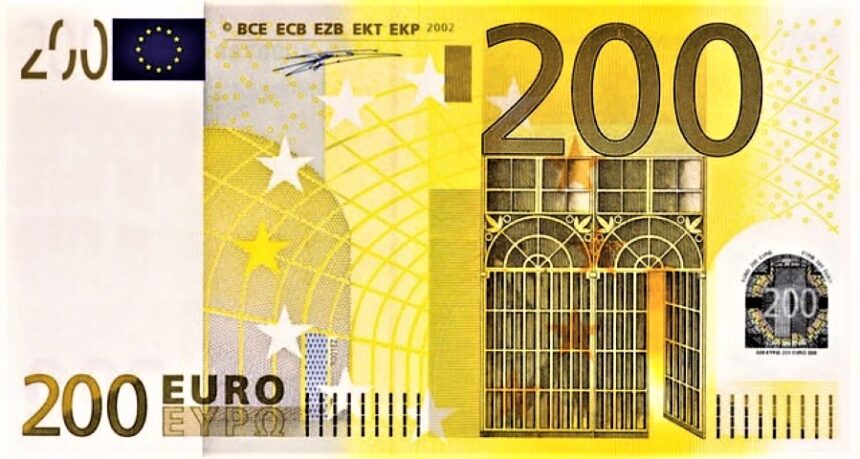EURUSD Tumbles After Eurozone PMI Shocker in May
The euro extended its losses against the US dollar on Thursday, with EURUSD plunging toward the 1.1300 mark in European trading. The decline followed the release of disappointing flash Eurozone PMI data for May, which painted a gloomy picture for the bloc’s economic activity. The HCOB Composite PMI fell sharply to 49.5, down from 50.4 in April, falling below the 50.0 threshold that marks the difference between expansion and contraction.
What stunned markets was not just the drop, but the fact that both services and manufacturing components weakened, with services contracting for the first time since November 2024. While manufacturing remained in negative territory, the unexpected slump in services weighed more heavily on sentiment, as it had previously been the more resilient sector of the economy.
EURUSD Struggles Broadly as Safe-Haven Flows Strengthen
The euro’s weakness was not isolated to the dollar. As the accompanying currency performance heat map shows, the euro was down across the board—most significantly against the Japanese yen, as investors sought safe-haven assets amid rising geopolitical and economic uncertainty.
The euro depreciated 0.29% against the US dollar, 0.41% against the yen, and 0.33% against the New Zealand dollar, reflecting widespread bearishness in the single currency. The euro’s underperformance highlights how souring economic data and dovish monetary policy expectations are feeding into negative sentiment.
Russia-Ukraine Ceasefire Doubts Undermine Eurozone Stability
Geopolitical factors further compounded the euro’s losses. Fresh doubts over Russia-Ukraine ceasefire talks emerged after US President Donald Trump reportedly told European leaders in a private call that Vladimir Putin has no intention of ending the war, believing Russia is winning. These comments were reported by the Wall Street Journal, contradicting Trump’s earlier remarks on Truth Social suggesting that both sides were engaging in immediate truce negotiations.
This uncertainty over peace efforts, especially with the Vatican hosting sensitive diplomatic talks, has rekindled volatility in European markets and cast a shadow over the Eurozone’s economic outlook, weighing heavily on the common currency.
ECB Rate Cut Bets Intensify After PMI Miss
The weak PMI figures added fuel to expectations that the European Central Bank (ECB) will cut interest rates at its upcoming June policy meeting. ECB policymakers, including Bank of Portugal Governor Mario Centeno, have recently indicated that the policy rate may have to fall below the estimated natural rate to stimulate inflation and growth.
Centeno stated on Wednesday that “in order to keep inflation at 2%, the ECB may have to go below the natural rate,” which he pegged between 1.5% and 2%. With inflation softening across the bloc and economic activity deteriorating, markets are now pricing in a higher probability of a rate cut next month—another headwind for the euro.
Nagel’s Optimism on Trade Talks Offers Little Respite
One of the few silver linings for the euro came from Bundesbank President Joachim Nagel, who struck an optimistic tone on EU-US trade relations. Speaking on the sidelines of the G7 meeting in Canada, Nagel said that both sides recognize there are no winners in trade conflicts, and that he is now “more confident than a few days ago” about the direction of trade talks.
However, Nagel’s remarks failed to lift the euro, as traders remained focused on the bleak economic data and mounting geopolitical tensions. The comments may offer some medium-term relief, especially if trade frictions ease, but they were not enough to stem the euro’s slide on the day.
US Dollar Recovers Despite Debt Concerns
While the euro suffered, the US dollar saw a mild recovery, reversing earlier intraday losses. The Dollar Index (DXY) edged higher, bolstered by relative strength and continued uncertainty over the global growth outlook. This rebound helped drive EURUSD to session lows near 1.1300, reinforcing bearish pressure.
Investors also looked ahead to the US S&P Global PMI report for May, due later in the day. Markets are watching closely for signs of resilience in the world’s largest economy, especially after recent data showed mixed trends across manufacturing, services, and labor markets.
Trump’s Tax Plan Raises Fiscal Red Flags
On the domestic front, however, the dollar’s strength is being tested by growing concerns over fiscal sustainability. On Wednesday, the House Rules Committee approved President Trump’s new tax bill, advancing it to a full House vote. The proposal, aimed at broad-based tax cuts, has drawn criticism for its long-term fiscal implications.
According to the Congressional Budget Office (CBO), the bill would add $3.8 trillion to the national debt over the next decade. That would push the current US debt, which already stands at $36.2 trillion, into uncharted territory.
Moody’s Downgrade Highlights Rising Risks
The potential debt blowout prompted Moody’s to downgrade the US sovereign credit rating last Friday from Aaa to Aa1, citing rising borrowing costs and political gridlock. The downgrade triggered a sharp increase in yields and raised alarms about the long-term impact of fiscal loosening in a high-interest-rate environment.
Despite these concerns, the dollar has remained relatively well-supported, thanks to its safe-haven appeal and the Federal Reserve’s cautious stance on monetary easing.
Federal Reserve Stays Hawkish Amid Stagflation Risks
Fed officials continue to preach patience, arguing that interest rates should remain elevated amid persistent inflation and growing policy uncertainty. Speaking at an investor forum, JPMorgan CEO Jamie Dimon said he supports the Fed’s decision to wait and observe before adjusting rates, warning of stagflation risks driven by geopolitical strife, deficits, and inflation pressures.
Dimon rejected the idea that the US is in a “sweet spot,” saying instead that the Fed’s restrictive guidance is justified given the current global backdrop. This suggests that unlike the ECB, the Fed is in no rush to ease policy, supporting the dollar’s relative strength against the euro.
Technical Outlook: EURUSD Eyes 1.1270 Support
On the technical front, EURUSD has broken below key intraday support levels near 1.1330, with 1.1300 now under pressure. A sustained break below this psychological mark could open the door toward 1.1270, followed by the 1.1220 zone, which served as a support floor in late April.
Momentum indicators remain bearish, with the Relative Strength Index (RSI) falling below 40 and the MACD histogram printing deeper negative bars. Only a sustained rebound above 1.1350 would ease immediate downside pressure and shift focus back to the 1.1400 resistance area.
Conclusion: Euro Bears Dominate as Fundamentals and Geopolitics Align
The combination of deteriorating Eurozone economic data, renewed geopolitical tension, and dovish ECB expectations has put the euro under intense pressure. With the dollar drawing support from relative economic resilience and the Fed’s hawkish pause, EUR/USD is likely to remain on the defensive in the near term.
Traders will closely watch the US PMI data, developments in Russia-Ukraine talks, and ECB officials’ upcoming speeches for further direction. Unless incoming data suggests a sharp rebound in Eurozone activity or the ECB signals a shift in tone, the euro’s downside risks remain elevated.
[faq-schema id=”39651″]









